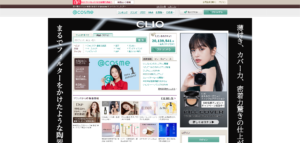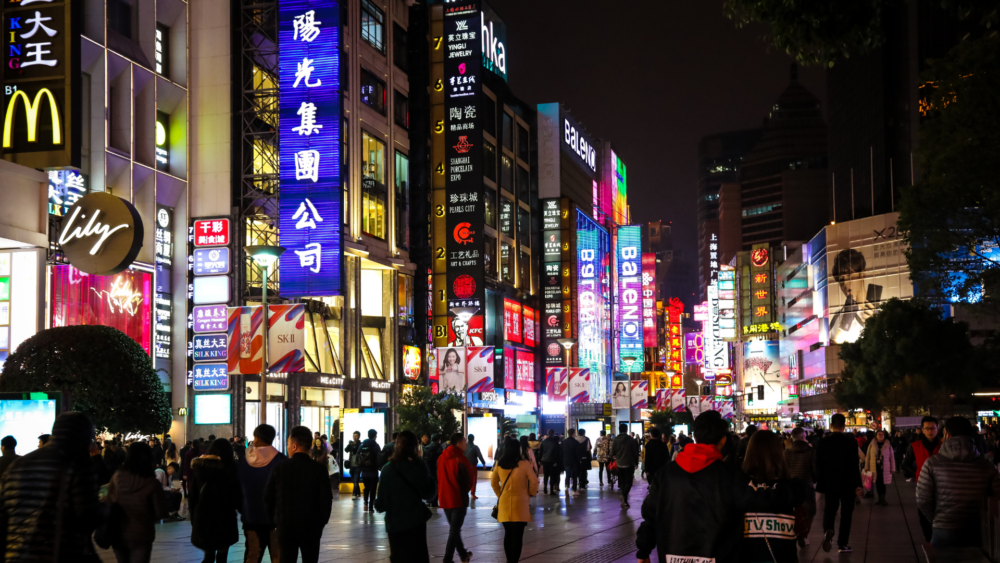With Western businesses expanding in Asian markets at an increasingly fast pace, the need to reach far-flung audiences to promote and sell products is more and more pressing. Nowadays, the web plays a huge role in determining the success of businesses, but is it really so easy to win the hearts and minds of customers belonging to such different cultures with just one click?
We recently shared some tips on how to adapt a website design to a new market with the help of localisation services (if you missed them, take a look at our article Cross-Cultural Design for Global Websites: Dos and Don’ts). In this article we will expand on that topic, looking at the Asian market – particularly China and Japan – in more detail, and analysing the features that make their web environments so… different!
Read on to find out more about the main web design trends in these markets, and why they survive regardless of globalisation.
Flashing Visuals
Despite the impracticality involved (we bet you wouldn’t appreciate a webpage taking literally ages to load!), the use of Flash animations in Chinese and Japanese websites is overwhelming. As opposed to the sleek, uncomplicated design of the UK version, the Chinese McDonald’s website may appear to the Western eye to be overcrowded, and is clearly characterised by the use of Flash (for example, for the rainbow heart logo on the homepage). A trend inspired by Korean website design, today Flash animations are still one of the staple elements found on Chinese and Japanese websites.
Studies show that this is due to the underlying nature of these cultures, which are considered to be “High Context”. As opposed to “Low Context” cultures – such as those of Scandinavia or Germany – communication in High Context cultures heavily relies on non-verbal, physical and visual aspects, whereby the symbolism of one’s gesture or body language contributes to conveying a message.
Think of the above in the web context, and you will immediately see how and why the predominance of animations and images works well in Chinese and Japanese web design. The image- and animation-rich communication of Chinese and Japanese websites can be seen as a form of indirect communication, which seems to be more common in Asian markets.
Contrasting but Meaningful Colours
Following on from the symbolism aspect outlined above, another facet to factor in when localising a website for China and Japan is the use of colour. A striking and common feature of Asian websites is the use of many vivid colours on the page. For example, the homepage of cosme – a Japanese website selling cosmetic products – stands out for its bright contrasting colours such as green, pink, orange, yellow, and so on.

To the Western eye, these different colours may clash and seem unusual, but Asian audiences in fact appreciate a generous use of colour on the page. Many argue that one of the reasons for this is that Chinese and Japanese web-surfers, while they might be using the Internet for a specific purpose, expect to find entertainment on a webpage. And bright colours – alongside Flash animations – do just that, they entertain the reader.
But colours are not only there to entertain! Let’s take a look at the Japanese version of Pepsi’s website, for example…

Oddly enough, the colours representative of the big beverage multinational – red and blue – seem to be overpowered by a strong presence of yellow. Is this a coincidence? We don’t think so! In Japanese culture, yellow symbolises bravery and wealth, thanks to a tradition dating back to the fourteenth century. In those days, warriors used to wear yellow chrysanthemums as a promise of courage towards the emperor.
And wait a minute… Do you see what we see? Isn’t that a warrior lying on the ground with a sword next to him? His name is Momotaro (or “Peach Boy”), and he is the protagonist of an old Japanese folktale recently revived by Pepsi in a series of new video ads. As the tale unfolds, this incredibly brave warrior fights against frightening creatures with the help of his animal friends – a monkey, a dog and a pheasant. All of that yellow suddenly doesn’t look so accidental, does it?
Of course, this is only one example of how the use of colours in Asian websites is well-thought out and most definitely aimed at producing a certain feeling or reaction in the audience.
Busy and Overcrowded Layout
Now, other than images and animations, have you ever noticed that there’s just so much going on when you visit a Chinese or Japanese website? Why is that? An interesting feature of the Asian web environment is the enormous amount of information each single webpage seems to carry within itself. We just need a quick look before feeling completely overwhelmed by (what look like) extremely long chunks of text, overlapping levels in a busy layout, and a web-surfer’s worst nightmare… hyperlinks like there’s no tomorrow!
As we know, Japan is at the cutting-edge of the technology industry, and for Japanese people mobile web-surfing became a thing well before the advent of the smartphone. Back in the early noughties, Japanese people were already surfing the web on their iconic flip phones (remember those?). Because of the small screens, the tendency was to cram as much information as possible into a limited space. And despite the progress made in this sense, this tendency has survived until today on some types of websites.
However, if we look at the bigger picture, the layout features typical of some Chinese and Japanese websites again go back to the theory of High vs. Low Context cultures, having also somewhat of a connection with certain technical difficulties (more on that later!). As we look more closely at the differences between High and Low Context cultures, a fascinating characteristic of the former is the fact that, when looking for information, individuals belonging to High Context cultures focus on the process as opposed to the goal (which is instead typical of Low Context cultures).
From the point of view of web design trends, this translates into the tendency to “hide” information on the webpage for the web-surfer to discover. It is not unusual on Chinese and Japanese websites to find information that at first glance seems to be missing, by moving the cursor over images or text. For example, on the homepage of a famous Japanese shopping website – Rakuten – there are some offers highlighted in the foreground (in the area outlined by a pink box, in the image below).

However, the value of these offers (which incidentally appear on the screen in a Flash animation!) is shown only when the cursor is placed on the relevant offer.
This type of design choice reveals the underlying cyclical thought pattern of High Context cultures as opposed to the linear one, which is typical of Low Context cultures.
Technical Barriers
The main Asian web design trends, however, are not only the result of cultural differences, but they also stem from certain technical difficulties related mainly to the nature itself of the Chinese and Japanese languages. As we know, both Chinese and Japanese rely on a logographic writing system, whereby each character represents a word or phrase. Moreover, both languages have an extremely high number of characters (in the region of several thousands), as opposed to the relatively contained numbers found in alphabetical writing systems.
What this means from a practical point of view is that typing on a keyboard for Chinese and Japanese users is… well, quite an experience! Since it would be impossible to have a keyboard that contains all the characters found in these languages, the system used is a phonological one, whereby to type each character the user needs to type its pronunciation.
An inevitable consequence of this is the fact that, although users are familiar with this phonological system, typing in Chinese and Japanese is relatively slower than in alphabetical languages – even if just a little bit. Therefore, rather than typing a search in a new tab, users prefer to click on a link to find what they’re looking for; and it’s for this reason that hyperlinks abound on Chinese and Japanese websites.
Also due to the high number of characters existing in both these languages is the poor range of fonts available. Developing new fonts in Chinese and Japanese means investing a lot of money and time on manually designing all the possible characters to reflect the new specific style the developer has in mind. That sounds like hard work, doesn’t it? That is why many web designers prefer lively images and animations over typographical variations on Asian websites. This also allows them to easily highlight certain words or concepts, which can be problematic if we take into account, for example, the fact that in Chinese and Japanese there are no such things as capital letters.
The importance of website localisation
Given the factors above, then, it will probably not come as a surprise to hear that adapting a website for the Asian market is not as easy as simply translating it. Cultural and linguistic differences need to be taken into account in order to provide a user-friendly experience through the tools appropriate for the target market.
And the same applies to a Chinese or Japanese website that needs to be localised for the Western market! A basic translation of a website (in either direction) which neglects the layout and design features discussed above could result in a costly mistake. Ignoring the huge difference in the preferences of the target market could mean that users then grow uninterested in the content – definitely not our desired outcome! Professional localisation services are a must in this case. Experts are needed to explore the main web design trends of the market, and in so doing meet the users’ needs.
If you are looking to expand your audience and need to localise your website to do so, send us an email to info@creativetranslation.com or call our office on +44 (0)207 294 7710 and we’ll be happy to help you reach new audiences.
Photo by Tran Mau Tri Tam ✪ on Unsplash




